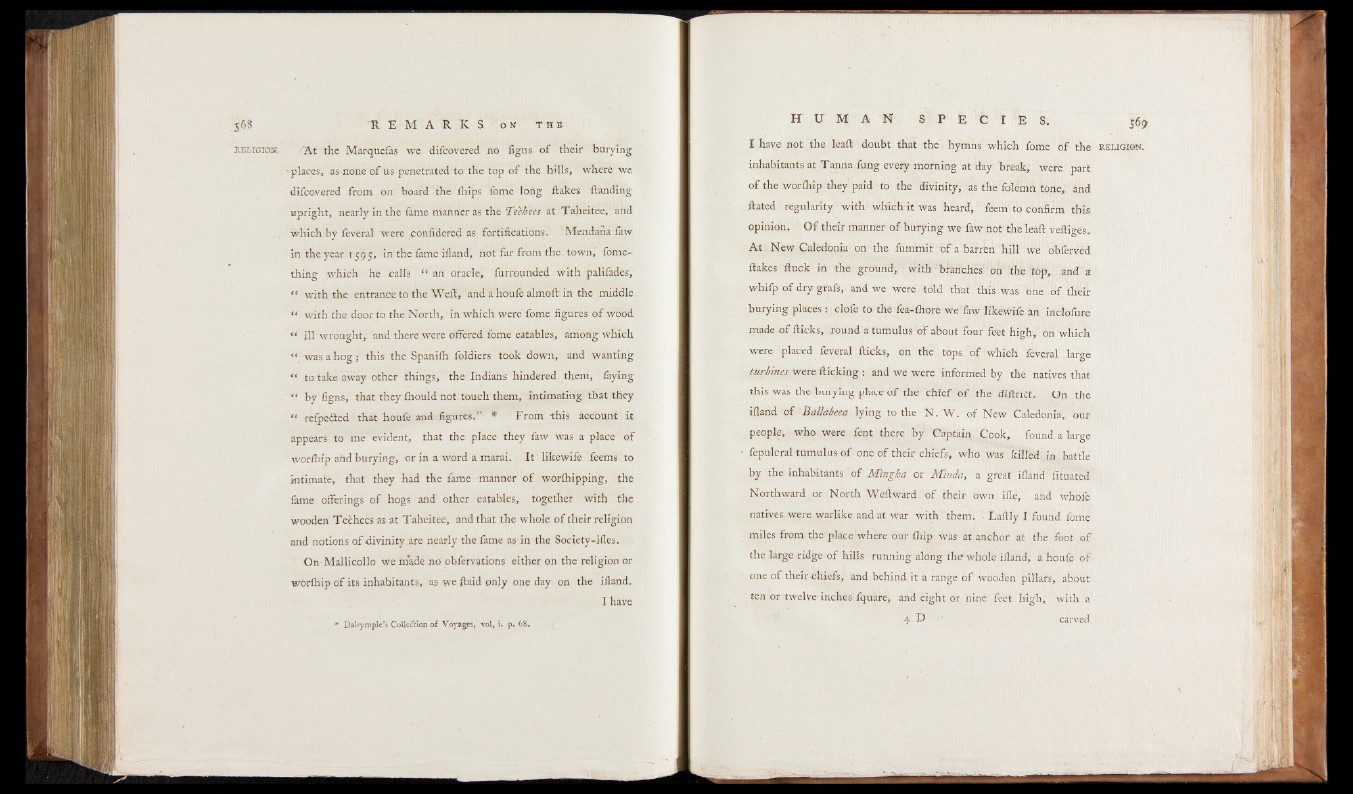
r e l ig io n . A t the Marquefas we difcovered no figns o f their burying
places, as none o f us penetrated to the top o f the hills, where we
difcovered from on board the Ihips fome long Hakes Handing
upright, nearly in the fame manner as the ‘Teehees at Taheitee, and
which by feveral were confidered as fortifications. Mendana faw
in the year 1595, in the fame ifland, not far from the town, fome-
thing which he calls “ an oracle, furrounded with palifades,
*« with the entrance to the Weft, and a houfe almoft in the middle
“ with the door to the North, in which were fome figures o f wood
“ ill wrought, and there were offered fome eatables, among which
“ was a h o g ; this the Spanifh foldiers took down, and wanting
“ to take away other things, the Indians hindered them, faying
“ by figns, that they fliould not touch them, intimating that they
“ refpeffed that houfe and figures." * From this account it
appears to me evident, that the place they faw was a place of
worlhip and burying, or in a word a marai. It likewife feems to
intimate, that they had the fame manner o f worftiipping, the
lame offerings o f hogs and other eatables* together with the
wooden Teehees as at Taheitee, and that the whole o f their religion
and notions of divinity are nearly the fame as in the Society-ifles.
On Mallicollo we made no obfervations either on the religion or
worlhip of its inhabitants, as we ftaid only one day on the ifland.
I haye
* Dairy mple’s Collection of Voyages, vol, i. p. 68,
I have not the leaft doubt that the hymns which fome of the religion.
inhabitants at Tanna fung every morning at day break, were part
of the worlhip they paid to the divinity, as the folemn tone, and
Hated regularity with which it was heard, feem to confirm this
opinion. O f their manner of burying we faw not the leaft veftiges.
A t New Caledonia on the fummit o f a barren hill we oblerved
Hakes ftuck in the ground,- with branches On the top, and a
whifp of dry grafs, and we were told that this Was one o f their
burying places: clofe to the fea-lhore we faw likewife an inclofure
made o f fticks, round a tumulus of about four feet high, on which
were placed feveral fticks, on the tops o f which feveral large
turbines were flicking : and we were informed by the natives that
this was the burying place o f the chief o f the diftrift. On the
ifland o f BaUabeea lying to the N . W . of New Caledonia, our
people, who were fent there by Captain Cook, found a large
fepulcral tumulus o f one o f their chiefs, who Was killed in battle
by the inhabitants o f Mingha or Mlnda, a great ifland fituated .
Northward or North Weftward o f their own ille, and whofe
natives were warlike and at war with them. | Laftly I found fome
miles from the place where our Ihip was at anchor at the foot o f
the large ridge o f hills running along the whole ifland, a houfe o f
one of their chiefs, and behind it a range of wooden pillars, about
ten or twelve inches fquare, and eight or nine feet high, with a
4 D ' carved
If